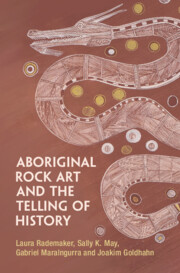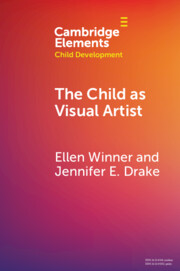38 results

Aboriginal Rock Art and the Telling of History
-
- Published online:
- 12 November 2024
- Print publication:
- 05 December 2024
Chapter 20 - Painting
- from Part V - Life, Illness, and the Arts
-
-
- Book:
- Robert Lowell In Context
- Published online:
- 28 March 2024
- Print publication:
- 04 April 2024, pp 216-226
-
- Chapter
- Export citation
14 - African American Literature and Visual Culture
- from Part IV - Critical Approaches
-
-
- Book:
- The Cambridge Companion to Contemporary African American Literature
- Published online:
- 14 December 2023
- Print publication:
- 21 December 2023, pp 239-253
-
- Chapter
- Export citation
18 - “The Sound I Saw”
- from Part V - Images and Screens
-
-
- Book:
- Jazz and American Culture
- Published online:
- 09 November 2023
- Print publication:
- 30 November 2023, pp 277-290
-
- Chapter
- Export citation
4 - Images and Aesthetics for International Environmental Law
-
- Book:
- Natural Perception
- Published online:
- 02 August 2023
- Print publication:
- 14 September 2023, pp 89-119
-
- Chapter
- Export citation
The State of the Records of the Federation Union of Black Artists at the Johannesburg Art Gallery: An Overview
-
- Journal:
- History in Africa / Volume 50 / May 2023
- Published online by Cambridge University Press:
- 08 March 2023, pp. 275-292
-
- Article
-
- You have access
- Open access
- HTML
- Export citation
Chapter 14 - Eros: After Surrealism and Before the Revolution (1945–1967)
- from Part IV - Aesthetics and Innovation
-
-
- Book:
- Latin American Literature in Transition 1930–1980
- Published online:
- 24 January 2023
- Print publication:
- 08 December 2022, pp 229-244
-
- Chapter
- Export citation
Chapter 14 - Eros
- from Part IV - Aesthetics and Innovation
-
-
- Book:
- Latin American Literature in Transition 1930–1980
- Published online:
- 24 January 2023
- Print publication:
- 08 December 2022, pp 229-244
-
- Chapter
- Export citation

The Impact of Everyday Language Change on the Practices of Visual Artists
-
- Published online:
- 21 April 2022
- Print publication:
- 19 May 2022
-
- Element
- Export citation

The Child as Visual Artist
-
- Published online:
- 12 April 2022
- Print publication:
- 12 May 2022
-
- Element
- Export citation
Chapter 16 - Ideals of a Picture Gallery
- from Part III - Aesthetics
-
-
- Book:
- British Literature in Transition, 1900–1920: A New Age?
- Published online:
- 07 December 2021
- Print publication:
- 02 December 2021, pp 295-312
-
- Chapter
- Export citation
Chapter 10 - Visualizing Black Identity in Ellison’s Fiction
- from Part II - Historical, Political, and Cultural Contexts
-
-
- Book:
- Ralph Ellison in Context
- Published online:
- 14 January 2022
- Print publication:
- 02 December 2021, pp 117-126
-
- Chapter
- Export citation
Chapter 15 - Brecht and Photography
- from Part II - Brecht’s Work
-
-
- Book:
- Bertolt Brecht in Context
- Published online:
- 28 May 2021
- Print publication:
- 10 June 2021, pp 131-139
-
- Chapter
- Export citation
Chapter 20 - Dialogic Connections in Caribbean Literature and Visual Art
- from Part IV - Critical Transitions
-
-
- Book:
- Caribbean Literature in Transition, 1970–2020
- Published online:
- 16 December 2020
- Print publication:
- 14 January 2021, pp 333-354
-
- Chapter
- Export citation
12 - Apocalyptic Sensibility in Renaissance Europe
-
-
- Book:
- The Cambridge Companion to Apocalyptic Literature
- Published online:
- 28 February 2020
- Print publication:
- 26 March 2020, pp 212-230
-
- Chapter
- Export citation
Ekphrasis
- from Key Topics
-
- Book:
- The Cambridge Guide to Homer
- Published online:
- 22 February 2020
- Print publication:
- 05 March 2020, pp 116-117
-
- Chapter
- Export citation
Part II - Representing Transitional Justice on the Global Stage
-
- Book:
- The Justice of Visual Art
- Published online:
- 17 October 2019
- Print publication:
- 07 November 2019, pp 127-209
-
- Chapter
- Export citation
2 - Art and Justice in Times of Transition
-
- Book:
- The Justice of Visual Art
- Published online:
- 17 October 2019
- Print publication:
- 07 November 2019, pp 10-32
-
- Chapter
- Export citation
9 - The Art of Representation
- from Part II - Representing Transitional Justice on the Global Stage
-
- Book:
- The Justice of Visual Art
- Published online:
- 17 October 2019
- Print publication:
- 07 November 2019, pp 168-192
-
- Chapter
- Export citation
Part I - Recognising Transitional Justice in the Nation State
-
- Book:
- The Justice of Visual Art
- Published online:
- 17 October 2019
- Print publication:
- 07 November 2019, pp 33-126
-
- Chapter
- Export citation

